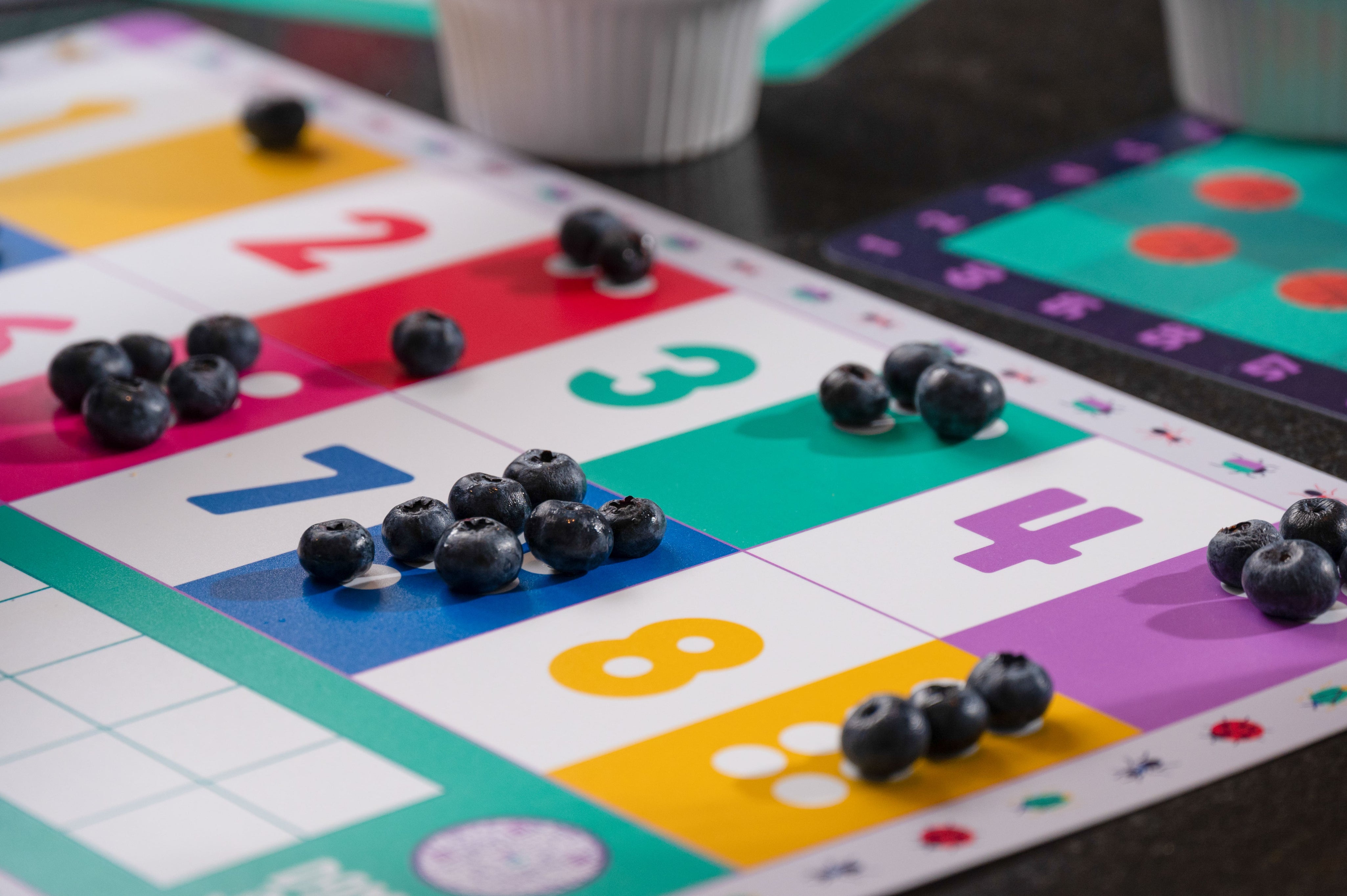Learning to Count

Written by Neily Boyd
As easy as 1-2-3! The fact is, counting 1-2-3 and so forth isn’t always easy for our children. When you think of teaching your child to count, the first thing that likely comes to mind is the number sequence: 1, 2, 3, 4, 5, 6, 7, 8, 9, 10, and so on. While knowing the number sequence is an important component to learning to count, it’s just one part of the process.
Knowing how to count means that a child can answer the question, “How many?” when shown a group of objects. For example, if there are 5 toy cars on the table and you ask your child, “How many cars are there?” they would point to each car and count, “1, 2, 3, 4, 5,” and then tell you, “5 cars.” “5 cars” is the answer to the question, “How many cars?”
Ready to dig deeper? As a parent, there are three main skills you’ll want to help your child develop in order to be able to answer this question.
-
Stable order
-
One-to-one correspondence
-
Cardinality
Stable order means your child understands that the order of numbers follows the same sequence every time we count. For example, 2 always comes before 3, never after. When your child knows the number sequence from 1 to 10 without mixing up the order of the numbers, they’ve developed stable order from 1 to 10. Oh the pride that comes with this! We love to show their new skill off to grandparents and neighbors, right?

One-to-one correspondence means your child understands each number they say corresponds to one object in the group. For example, when your child says, “One,” they know that means the first object in the set and can point to that object. “Two” means the second object in the set, and they move their finger to the second object. “Three” to the third object and so on. If your child counts a single object more than once or skips objects when they count a group, they haven’t yet developed one-to-one correspondence–and that’s ok! Our children learn at their own pace.
Cardinality means your child understands the last number they say when counting a group tells the size of the whole group. For example, if there are 5 bears and you ask how many bears there are, a child counts, “1, 2, 3, 4, 5,” and then answers, “Five. There are 5 bears.” If a child simply recounts the group from the beginning and is unable to say there are 5 in total, they haven’t yet developed cardinality. Remember, tell yourself it’s ok if they are taking longer than expected. There’s so much pressure to rush, and if we can stress anything, it’s far better to slow down, to master a concept and then to move forward.
How can you help your child develop these important counting skills? It starts with showing your child how you count. Whenever you can, count groups of objects aloud, emphasizing all three of these components–saying the number sequence in the correct order (stable order), pointing to each object as you count and saying the next number in the number sequence (one-to-one correspondence), and restating the last number to name the size of the whole group (cardinality).
As your child gets used to hearing you count aloud, you can invite them to help you count the group and do it together. Start small here. At the beginning, your child will likely feel more confident helping you count a group of 3 objects than a group of 7 objects. With time and practice, they’ll gain confidence to count the group of objects on their own, and you can continue to increase the size of the group.
What will you count next? Share your number adventures with us, tagging @dominoandjuliette so we can see the fun you’re having!

